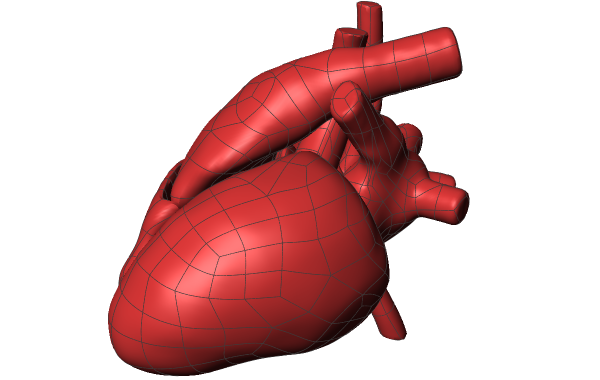ESR 12: Goal-oriented Error Controlled Super and Sub-geometric Finite and Boundary Element Methods for Patient-Specific Simulation of Cutting
Early Stage Researcher: Antoine Perney
Host institution: Synopsys – Simpleware Product Group (UK)
Supervisor: Prof. Stéphane Bordas, University of Luxembourg(UL, LU)
Co-supervisor: Viet Bui Xuan, R&D Manager of the Simpleware Product Group at Synopsys
Clinical expertise: Dr. Frank Hertel, Centre Hospitalier de Luxembourg, LU
Further institution involved: Mines ParisTech (FR)
Objectives
 Developing patient-specific geometrical models for organs is still a challenge, especially when topological changes such as cutting are involved. We will develop an integrated approach from image to simulation based on super and sub-geometric approaches. The idea is to simplify the development of patient-specific models from medical images by employing NURBS basis functions whilst allowing, using sub-geometric approaches pioneered at UL, to optimise the computational expense. We will address cutting of soft bodies in large deformation, in collaboration with ESR08 who focuses on cutting of biological membranes and bulk cutting, respectively. Adaptivity will be done by goal-oriented error estimation using the dual weighted residual approach. This work will both simplify and automate the creation of patient-specific models.
Developing patient-specific geometrical models for organs is still a challenge, especially when topological changes such as cutting are involved. We will develop an integrated approach from image to simulation based on super and sub-geometric approaches. The idea is to simplify the development of patient-specific models from medical images by employing NURBS basis functions whilst allowing, using sub-geometric approaches pioneered at UL, to optimise the computational expense. We will address cutting of soft bodies in large deformation, in collaboration with ESR08 who focuses on cutting of biological membranes and bulk cutting, respectively. Adaptivity will be done by goal-oriented error estimation using the dual weighted residual approach. This work will both simplify and automate the creation of patient-specific models.
Expected Results
An automatic image to mesh pipeline for goal-oriented simulation of fracture in finite elasticity.
Planned research stays
- Synopsys (25 months): Conversion of medical images to STL parts and from STL parts to NURBS parts using Simpleware Software. Couple the inhouse Sup/SubIGAFEM software to the Simpleware Software.
- UL (6 months): Training on Geometry Independent Field approximation
- Mines ParisTech (4 months): Training in physics-based image registration and contact algorithms, e.g. on the finite element code Zset housed there
- Synopsys (1 month): finalize deliverables and write thesis.
